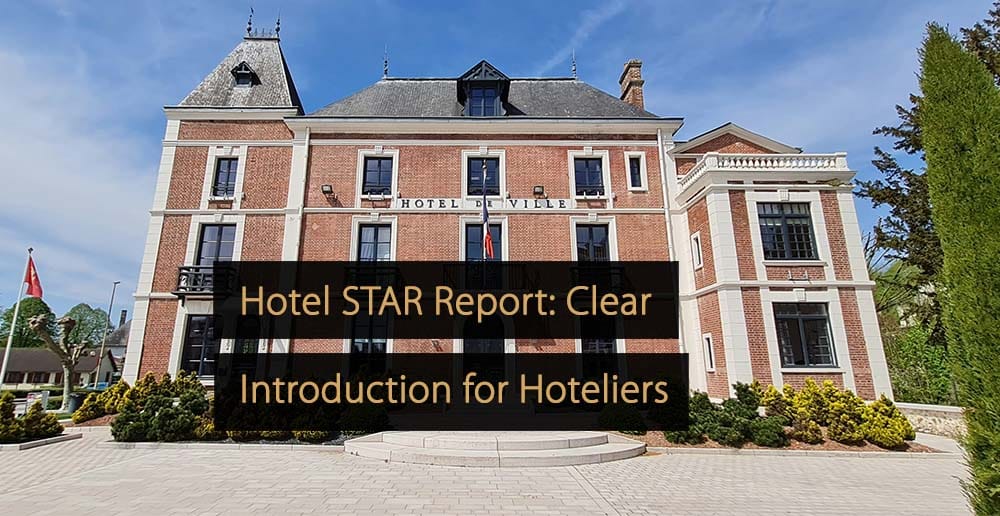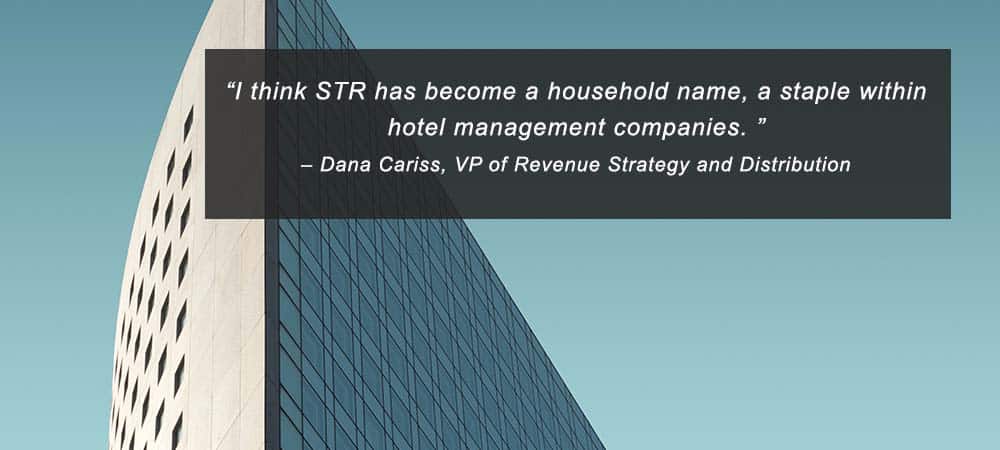Hotel STAR Report
The Hotel STAR Report is a critical performance benchmarking tool in the hospitality industry, providing detailed revenue and occupancy data compared to competitors. It is important because it helps hoteliers make informed pricing, marketing, and operational decisions by understanding their market position and identifying trends. Ultimately, it aims to boost profitability and market share.
Key Takeaways
- The Key Components: Outlines crucial metrics and data segments within the report for better insight.
- Analyze the Occupancy Data: Gauges room usage to optimize booking and pricing strategies.
- Assess Average Daily Rate Measures average earned revenue per occupied room.
- Evaluate Revenue Per Available Room: Combines occupancy and ADR for overall financial health assessment.
- Understand the Market Penetration Index: Compares a hotel’s market share against competitors’.
- Examine the Average Rate Index: Analyzes the hotel’s pricing strategy effectiveness relative to the market.
- Review Revenue Generation Index: Evaluates overall revenue performance compared to the competitive set.
- Scrutinize Your Competitive Set: Reviews chosen competitors to ensure accurate market comparison.
- Look for Trends and Anomalies: Identifies patterns and irregularities for informed decision-making.
Table of Contents:
- What is the Hotel Industry?
- What is a Hotel STAR Report?
- Why the Hotel STAR Report Matters
- Key Metrics Analyzed in a Hotel STAR Report
- Navigating the Hotel STAR Report: A Detailed 10-Step Guide for Hotel Managers
- Comprehend the Key Components
- Analyze the Occupancy Data
- Assess Average Daily Rate (ADR)
- Evaluate Revenue Per Available Room (RevPAR)
- Understand the Market Penetration Index (MPI)
- Examine the Average Rate Index (ARI)
- Review Revenue Generation Index (RGI)
- Scrutinize Your Competitive Set
- Look for Trends and Anomalies
- Extract Insights and Start to Strategize
- Using the Hotel STAR Report for Hotel Strategy
- An Overview of Hotel Management Roles
- The Most Significant Hotel Industry Trends
Introduction
The Smith Travel Accommodations Report, better known as the Hotel STAR Report, is a valuable benchmarking tool which provides you with data covering your competitive set and the wider industry. In this post, you can access a complete introduction for hoteliers, with a breakdown of the key metrics and why the report matters so much.
What is the Hotel Industry?
Before examining a hotel STAR report, we must specify how the hotel industry is defined. According to most accepted definitions, the hotel industry is the industry surrounding the provision of lodgings for guests. In addition to providing hotel guests with temporary overnight accommodation, hotels often offer additional hospitality services.
Check out the “Hotel Industry: Everything You Need to Know About Hotels!” guide for an in-depth look at the industry, the different types of accommodation, and the key differences between the hotel industry and the hospitality industry. You can also access links to guides covering hotel positions, hotel strategies, and more.
What is a Hotel STAR Report?
The hotel STAR Report, sometimes known as the STR Report, is a competitive report and benchmarking service provided by STR, Inc. (previously known as Smith Travel Research). The company is a global analytics leader that produces reports for hotels and provides data about their competitive set (compset) and the wider industry.
A hotel owner, manager or department leader can use the hotel’s STAR Report to compare the hotel’s performance with that of its main rivals. In addition, the data provided makes it easier to identify trends in your performance, take steps to resolve performance issues, and keep up with broader market trends.
It should also be noted that different types of reports are available. For instance, the STR Trend Report is available for a set fee of around $600 and provides performance data for the industry or a specific market. A comprehensive hotel STAR Report, with benchmarking, market share, and visualization tools, is available as an ongoing subscription. This provides greater control and all of the key information needed for real-time decision-making.
Why the Hotel STAR Report Matters
Successful hotels are more reliant on data and analytics than ever before. Modern hotel revenue management involves using data to make intelligent forecasts and adjustments to pricing and distribution. Acquiring your hotel STAR Report can provide comprehensive data that allows you to extrapolate to make evidence-based predictions.
Having wider industry data, especially about your compset, can greatly assist with strategic decisions. It can be extremely valuable to know whether your performance patterns align with your rivals, whether you are bucking those trends, or whether you are being outperformed by the hotels you are competing with. Without this information, you may be stuck viewing your performance in a vacuum, without the necessary context to draw real conclusions.
Several other hotel operations and disciplines rely on a firm understanding of current hotel performance, historic hotel performance, and local and global hotel trends. Hotel marketing strategies are a good example of this, but the information can also be valuable to the finance department and various others.
Ultimately, a STAR Report is a benchmarking tool that allows you to understand your hotel’s current standing in the industry. The ability to benchmark against specific rivals, or based on data from a particular region, means that the report is useful for accommodation businesses worldwide, regardless of size and revenue.
Key Metrics Analyzed in a Hotel STAR Report
The following sections will provide useful information about the metrics covered in a hotel STAR Report.
1. Occupancy Data
The occupancy rate of a hotel measures the number of available rooms that were occupied during a specific period. It is expressed as a percentage and is one of the most important metrics for understanding demand levels. A high occupancy rate indicates high demand and effective usage of available rooms, while a low rate indicates the opposite. A hotel STAR Report may provide recent and historical occupancy data.
2. Average Daily Rate (ADR)
Average daily rate (ADR) is a metric that tells you the average room rate paid by guests per room occupied in a specific period. Tracking ADR in a hotel STAR report over time and benchmarking against the ADR of other hotels allows you to understand how effective your pricing strategy is. A high ADR compared to rivals suggests that guests are willing to pay more to stay in your hotel. However, this needs to be viewed alongside occupancy rate and other metrics.
Video: What is Occupancy, ADR, and RevPAR?
3. Revenue Per Available Room (RevPAR)
Revenue per available room (RevPAR) is another revenue performance metric, so what is RevPAR and how does it differ from ADR? RevPAR combines ADR and occupancy rate, offering a complete picture of current performance. It tells a hotel how much money it has made per room available in a particular period, regardless of whether the rooms were sold. It is calculated by dividing total room revenue by the number of rooms available.
4. Market Penetration Index (MPI)
The market penetration index in a hotel STAR Report is an overview of market share for a particular market segment. A hotel’s market penetration can be calculated by dividing its occupancy rate by the average occupancy rate within the compset. This allows you to understand how your hotel’s occupancy compares to rival hotels and can help indicate how effective you are at attracting guests. A low MPI score suggests a need for improvement in your hotel’s offerings or your marketing or distribution strategies.
5. Average Rate Index (ARI)
The average rate index section of your hotel STAR Report is similar to the market penetration index, but it focuses on the average daily rate rather than the occupancy rate. Again, your hotel’s metrics will be directly compared with the average for your compset. A higher ARI score either suggests customers are willing to pay more for your hotel than they are your main rivals or that your hotel is overpriced. This can be understood more clearly by also exploring occupancy.
6. Revenue Generation Index (RGI)
Finally, the revenue generation index component of a hotel STAR Report combines aspects of both MPI and API scores. It helps you to build up a picture of overall revenue management performance. This is achieved by comparing your RevPAR with the average RevPAR for your compset. Your score then presents a useful snapshot of performance, taking into account your occupancy levels and pricing strategy. Successful revenue management strategies generally result in a high revenue generation index score, while a low score suggests improvement.
Navigating the Hotel STAR Report: A Detailed 10-Step Guide for Hotel Managers
The following 10 steps can assist hotel managers in navigating their hotel STAR Report for the first time.
1. Comprehend the Key Components
Prior to reading and analyzing your hotel STAR Report, you need to comprehend its key components. This means ensuring you understand the most important metrics, like ADR, occupancy rate, RevPAR, the average rate, revenue generation, and market penetration indexes.
It is also important to understand how the different metrics relate. For instance, the occupancy rate alone can only tell you how much of your hotel was occupied. To understand whether you are extracting an appropriate level of revenue from those occupied rooms, you need to consider metrics like ADR and your revenue generation index score.
2. Analyze the Occupancy Data
The occupancy data provided in your hotel STAR Report is essential for understanding demand levels not only in your hotel but also in the other hotels in your compset. Occupancy data is presented in the report as a percentage, so 100 percent occupancy means every room in the hotel was occupied, while 0 percent means none were occupied.
You need to consider what the data tells you about your own hotel and the other hotels. A high occupancy rate is usually a good indicator of strong demand for rooms. However, this is not necessarily always a good sign for revenue management. It could also suggest that your hotel room rates are significantly lower than rivals and while demand is high, this could mean you are failing to generate as much revenue as you could.
3. Assess Average Daily Rate (ADR)
The average daily rate information is presented in your hotel’s STAR Report. This is available for your hotel and for other hotels in your compset or market segment. It is one of the main ways to understand your pricing strategy’s effectiveness and how your revenue generation compares to your main competitors.
In addition to learning the effectiveness of your pricing strategy, ADR can indicate how guests perceive your hotel. If your ADR is significantly higher than your rivals, it may indicate that guests see your hotel as being worth the extra expense. This is especially true if your occupancy rate also looks strong.
4. Evaluate Revenue Per Available Room (RevPAR)
Revenue per available room combines information from your occupancy and ADR metrics, making it easier to understand the true picture of your performance. This makes RevPAR a crucial element of your hotel STAR report.
One of the most important revenue management tips is to look closely at your hotel’s RevPAR data and try to understand what it tells you. If you see RevPAR has gone up from a previous period, you need to understand what may have caused this rise and consider whether other hotels have experienced a similar rise. Similarly, if your RevPAR goes down, this may indicate an issue with strategy, but it could also result from industry trends.
5. Understand the Market Penetration Index (MPI)
Next, you need to fully understand the market penetration index section of your hotel STAR Report. This means knowing what the MPI shows and how to use it to inform some of your hotel strategies. Essentially, MPI uses occupancy rate data to compare your hotel to the average for your compset.
This helps you to understand what your occupancy rate means in real terms. For instance, you may notice that your occupancy rate is increasing monthly. However, if your MPI score is not high, it may indicate that your rivals are experiencing an even more rapid increase and leaving your hotel behind.
6. Examine the Average Rate Index (ARI)
The average rate index section of the hotel STAR Report can help you understand your pricing strategy and revenue outcomes relative to the other hotels in your compset. It is, after all, a measure of how your ADR compares to those other hotels, with a high score indicating that you are outperforming them and a low score indicating the opposite.
Again, the ARI allows you to actually extract meaning from your ADR. It gives you a basis for comparison and lets you quickly understand your performance in direct comparison to your major rivals. If your ARI score is low, it could indicate quality issues or superior offerings from rivals, but it may also indicate that you have set room rates too low.
7. Review Revenue Generation Index (RGI)
The revenue generation index within your hotel STAR Report gives you the best instant snapshot of your revenue management performance. Tracked over time, it can also present useful revenue management trends.
Your RGI score is a reflection of your combined MPI and ARI scores. It directly compares your RevPAR with the other hotels in your competitive set. This gives you information on your share of the market and your revenue generation performance. A low RGI suggests improving occupancy, room rates, or both. You can identify strengths and weaknesses by combining this with the other metrics in your hotel STAR Report.
Video: Hotel Revenue Management – Reading a STR Report [Beginner]
8. Scrutinize Your Competitive Set
Once you have worked through the main key performance indicators in the hotel STAR Report, you need to consider scrutinizing your compset. Which hotels are performing well? Which hotels are performing badly? Which hotels are showing improvement? Which hotels appear to be declining? What do top performers have in common?
Your compset is ideal for benchmarking your performance. How are you performing compared to other hotels of a similar size or type? What areas are you outperforming rivals in? Where could you improve performance? Constantly reviewing your compset through your STAR Reports allows you to better understand market dynamics and realities.
9. Look for Trends and Anomalies
A hotel STAR Report can be useful on its own, but the best way to use this benchmarking tool is to take a much longer-term approach. Over time, you should start to look for trends and anomalies within the data. This could be trends and anomalies related to your performance, the combined performance of your compset, or individual rivals.
Examples of trends include upturns in performance metrics over a sustained period or downturns in performance. Anomalies are performance metrics or data sets that stand out as unusual. Identifying trends and anomalies can help you make more accurate projections, anticipate difficulties, address issues, or understand rival success stories.
10. Extract Insights and Start to Strategize
Finally, you need to extract valuable and actionable insights from your hotel STAR Report and consider how these insights can inform your hotel strategies in the weeks and months ahead.
The data provided by the report can serve as evidence for making changes to strategy if things are going wrong or if competitors are making gains you are not seeing. You can use the report to focus on what you are doing well and what others are doing well. You can also use the data to make sensible, well-reasoned predictions and projections, allowing you to plan your strategies and gain a competitive edge.
Using the Hotel STAR Report for Hotel Strategy
Your hotel’s STAR Reports will provide you with information that can be used for strategic purposes. After analyzing your reports, you should be able to build a picture of where your hotel stands within your specific segment of the market. You should also have a clear sense of your main rivals and the direction they are heading.
This allows you to constantly track which hotels are underperforming and which are performing well. You can then also dig deeper into why this may be the case. When examining your performance indicators, you can track which decisions impact your results and what that impact is.
Many metrics in the hotel STAR Report will provide clues for your next steps. For example, if you notice your occupancy rate is lower than rivals, you should explore why. You may be charging higher room rates and customers do not perceive you to be offering value for money. It could equally be that rivals are presenting a more compelling offer to customers, or that wider events are impacting you more than them.
Ultimately, a hotel STAR Report provides tangible numbers to inform your decision-making. Your report will give you clues to improve performance and understand your rivals’ performance.
An Overview of Hotel Management Roles
Hotel management is a multi-faceted discipline that can be aided by acquiring the STAR Report from STR, Inc. That said, management goes further than analyzing performance and devising strategies. There are many responsibilities, including managing staff and overseeing hotel operations.
In the “Hotel Management: Everything You Need to Know About Managing a Hotel” post, you can read all about management positions, the necessary qualifications, the key responsibilities and more.
Hotel Technology Trends and Innovations
Hotel technology is often a competitive differentiator. If you read your hotel STAR Report and find that you are lagging behind rivals, you should consider whether they may be making more effective use of technology. Among the most important trends are service automation and the increased use of AI.
In the “Hotel Technology Trends: 20 Upcoming Innovations of 2024 You Must Know” post, you will find a detailed overview of the major innovations and technology solutions that are making waves in the hotel industry.
The Most Significant Hotel Industry Trends
Acquiring a hotel STAR Report regularly can help to provide you with information about performance trends. Yet, effective management of a hotel requires you to have an understanding of other trends too. This could include customer trends, like an increased focus on sustainability, or technology trends, like the rise of mobile check ins.
In the “Hotel Trends: Discover The Latest Hotel Industry Trends for 2024!” post, you can access a complete breakdown of the major trends impacting hotels right now, so you can ensure your business is prepared.
The hotel STAR Report is a benchmarking report produced by the analytics company STR Inc. It provides valuable information about your hotel’s performance and the performance of other hotels in your competitive set. This allows you to identify trends, extract actionable insights, and implement strategic changes.
More Tips to Grow Your Business
Revfine.com is the leading knowledge platform for the hospitality and travel industry. Professionals use our insights, strategies, and actionable tips to get inspired, optimize revenue, innovate processes, and improve customer experience.Explore expert advice on management, marketing, revenue management, operations, software, and technology in our dedicated Hotel, Hospitality, and Travel & Tourism categories.
This article is written by:
Hi, I am Martijn Barten, founder of Revfine.com. With 20 years of experience in the hospitality industry, I specialize in optimizing revenue by combining revenue management with marketing strategies. I have successfully developed, implemented, and managed revenue management and marketing strategies for individual properties and multi-property portfolios.










Leave A Comment